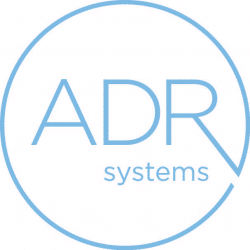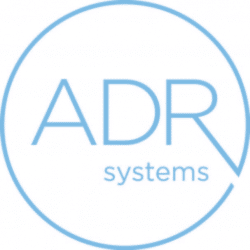Many parties desire to have their ‘day in court’ – their opportunity to present their claims or defenses before a judge or jury in pursuit of justice. The courtroom has long symbolized authority, accountability and public recognition. Yet litigation costs are mounting, the life of a case is lengthening and fewer cases – according to some data[1] – are going to trial.
Even as these shifts occur, the core motivations that drive parties to seek their ‘day in court’ persist.
This enduring pursuit is best understood through the lens of procedural justice[2] – the perception that a legal process is fair, regardless of the outcome. Research in legal psychology has consistently shown that when parties feel a process is fair, they are more likely to accept outcomes, even if adverse. This perception of fairness hinges on four primary elements: (1) the opportunity to express one’s story; (2) the neutrality of the decision-maker; (3) the trustworthiness and transparency of the authority; and (4) respectful treatment throughout the process.
Alternative dispute resolution (ADR), specifically mediation and arbitration, offers a forum where these four elements are not only present, but often emphasized. While ADR differs from the traditional courtroom in form, it frequently delivers the same, if not superior, substantive and psychological benefits. Giving a party their ‘day in court’ can be distilled into three core experiences: the need to tell one’s story, be seen and heard by a neutral third party and to achieve some form of justice – whether through vindication, catharsis or closure.
Parties Want to Tell Their Story
Mediation
Mediation provides a forum where parties can tell their story without the formal constraints of litigation. Hon. Margaret A. Brennan, (Ret.), senior mediator and arbitrator at ADR Systems, emphasizes that “The parties are going to feel like participants in the mediation.” She begins each session by inviting both sides to share what brought them to the table, encouraging open dialogue. “What would you like to share? Why are you in mediation? What led to this lawsuit?” she asks.
This act of sharing one’s story, giving parties their “voice”, is a cornerstone of procedural justice. In mediation, there are no objections, no exclusion of speculative or emotional content. Rather, parties are encouraged to share their full experience. Every legal action is a story, and effective mediators use narrative to guide resolution. Unlike court proceedings, which are often narrowed by procedural rules and adversarial positioning, mediation recognizes the emotional and psychological drivers of conflict and allows parties to articulate their interests and their grievances in a humanized way.
This freedom fosters a sense of fairness and ownership over the process, increasing the likelihood that parties will be satisfied by the outcome – even if the result is not exactly what they envisioned. The opportunity to tell one’s story, or to exercise one’s “voice”, has an independent effect on perceptions of fairness.
Arbitration
Arbitration more closely resembles a bench trial. Yet, it still allows ample opportunity for parties to tell their stories, often with fewer procedural hurdles and more efficiency.
Hon. William J. Haddad, (Ret.), senior mediator and arbitrator at ADR Systems, explains, “Arbitration is a mode of less formality, but it allows the arbitrator to listen to evidence that may not be heard in trial.”
Although arbitration is adjudicatory in nature, it often offers greater accessibility and less delay than trial. Its reduced formality allows for more direct, uninterrupted storytelling. Freed from the rigid scheduling, extensive motion practice and strict evidentiary rules of courtroom litigation, parties can present a fuller, more coherent narrative in a streamlined setting.
The value of arbitration lies not only in the decision rendered, but in the opportunity it provides for parties to present their case in a manner that feels thorough, personalized and respected.
Parties Want to be Seen and Heard by a Neutral Third Party
Mediation
One of mediation’s most profound strengths lies in the neutral’s ability to truly listen. Hon. Kay M. Hanlon, (Ret.), senior mediator and arbitrator at ADR Systems, underscores that, “Most of mediation is listening. I focus on listening to people, which helps me understand how to help them get closure.”
She routinely invites parties to speak freely. Judge Hanlon’s goal is to create a space where parties feel acknowledged and understood, aligning precisely with procedural justice theory, which identifies neutrality, trustworthiness and respectful treatment as core elements in the perception of fairness.
Furthermore, mediation allows for ex parte communication, which fosters candid dialogue. Judge Hanlon notes that such sessions help her understand the parties’ expectations, fears and desired outcomes. These conversations, when conducted with empathy and impartiality, establish the mediator as a trusted third party – one who is not issuing a judgement but facilitating a path forward.
Arbitration
Arbitration also centers the role of the neutral third party, albeit in a more formal, adjudicative way. Unlike court trials, parties in arbitration are often empowered to select their decision-maker.
Hon. Mitchell L. Hoffman, (Ret.), senior mediator and arbitrator at ADR Systems, explains, “I don’t overly insert myself into the process. I let parties make their cases, and at the end of the process, I make a ruling based on law and fact.”
His approach underscores the arbitrator’s neutrality — offering a process where each side has a fair opportunity to be heard without interference or predisposition. It is this balance of active listening and impartial judgment that reinforces parties’ trust in the process.
Parties Want Vindication, Catharsis & Closure
Mediation
While trials seek judgment, mediation can offer something equally powerful: resolution with meaning. Judge Haddad shared a compelling example from a wrongful death mediation involving a young man. Though not a criminal matter, the bereaved parents yearned for a sense of public vindication — some acknowledgment that their son’s life had value and that his death should not be forgotten. Yet, significant evidentiary hurdles made a favorable trial outcome uncertain, and the litigation process itself threatened to deepen the family’s pain.
In mediation, a generous financial offer was made, but the family initially refused, viewing it as “blood money.” They didn’t want a transactional resolution — they wanted something lasting, something that honored their son’s memory. Recognizing this, Judge Haddad proposed a symbolic solution: create a scholarship fund in the young man’s name.
This idea changed the tone of the mediation. The scholarship provided a tangible tribute — one that would help others in the young man’s community while keeping his story alive. It gave the family a way to transform their grief into purpose. In that moment, the resolution became not just about compensation but about healing. It gave the parents a form of closure that a verdict never could: their son’s name would endure, and the impact of his life would be felt by future generations.
“There’s symbolism in settlements,” said Judge Haddad. “In a trial, there is no opportunity to have open negotiations. Mediators can be creative, whereas judges and juries cannot.”
The informal, flexible nature of mediation allows for these types of interest-based resolutions —remedies that speak to emotional truths as much as legal ones. By centering the parties’ values and experiences, mediation provides a path to catharsis and closure that is deeply personal and profoundly human.
Arbitration
Arbitration also offers closure, though its strength lies in finality. As a binding process, arbitration gives parties a definitive resolution. Yet, it is the how of that resolution that matters most.
Judge Hoffman explains, “When I make a ruling in an arbitration, I always explain my ruling. I think the parties are entitled to an explanation of how the arbitrator analyzes the facts, the law and how they reach their conclusion. It helps the parties accept the ruling, even if they don’t agree with it.”
By offering transparent, well-reasoned decisions, arbitrators bridge the gap between authority and empathy. This practice satisfies the procedural justice factors of neutrality, trust and respect. Even in an adversarial setting, this transparency allows parties to find emotional closure, especially when they understand that their positions were fairly considered. Arbitration enables parties to move on with confidence in the outcome, knowing they were heard and respected.
“People don’t tend to think about what their life will be like after the case has been resolved. When there is a resolution, they’ll find that the weight of the dispute has been lifted off their shoulders,” said Judge Hoffman.
More Than a Verdict
In today’s legal landscape, where formal trials are increasingly lengthy and costly, mediation and arbitration offer meaningful alternatives that do more than just resolve disputes – they honor the human needs at the core of conflict.
Whether through the opportunity to tell one’s story, the experience of being seen and heard by a neutral third party, or the chance to find vindication, catharsis and closure, mediation and arbitration uphold the rule of law not by replicating the courtroom, but by delivering justice in a form that is flexible, respectful and deeply affirming.
…..
[1] Due to the prolonged timelines and rising costs of litigation, many civil cases never reach trial. Administrative Office of the US Courts data shows that only 1,162 federal civil jury trials were completed in 2024, which is less than half of the 2,411 completed in 2004. Meanwhile, the median time to trial has risen above 36 months in 2024.
[2] Rebecca Hollander-Blumoff and Tom R. Tyler, Procedural Justice and the Rule of Law: Fostering Legitimacy in Alternative Dispute Resolution, 2011 J. Disp. Resol. (2011)
Hon. Margaret A. Brennan, (Ret.) served for 19 years in the Circuit Court of Cook County Chancery and Law Divisions and cultivated expansive knowledge of commercial cases such as employment matters involving discrimination and retaliatory discharge, construction and legal malpractice disputes. Colleagues commend Judge Brennan’s intelligence, persuasiveness, remarkable patience, careful case preparation and boundless energy, which contribute significantly to her success as a senior mediator and arbitrator.
Request Judge Brennan’s Availability
Hon. William J. Haddad, (Ret.) has spent decades practicing law. Judge Haddad led a civil litigation firm for 18 years, served as a company president and spent 10 years as a Law Division judge in the Circuit Court of Cook County. His broad background allows Judge Haddad to resolve a wide array of commercial and personal injury disputes. Judge Haddad is very active in the Chicago legal and business community and has received numerous awards for his service.
Request Judge Haddad’s Availability
Hon. Kay M. Hanlon, (Ret.) has expertise in resolving personal injury actions such as medical malpractice, mass torts and product liability, as well as commercial actions such as legal malpractice, eminent domain and subrogation. As a jurist and neutral, Judge Hanlon is always prepared and ready to listen attentively. Her open and friendly demeanor is known throughout the legal community. Her personality is tailor-made for her work as a mediator and arbitrator.
Request Judge Hanlon’s Availability
Hon. Mitchell L. Hoffman, (Ret.) has cultivated over 38 years of experience as a legal practitioner, having spent 21 of those years as a judge and 17 as an attorney. On the bench, he handled both Chancery and Law Division calls, settling many commercial and personal injury cases. Judge Hoffman is known for his detailed case preparation and analysis. He is fair and even-tempered and provides a calming influence during mediations.
Request Judge Hoffman’s Availability
ADR Systems, It’s Settled.®





